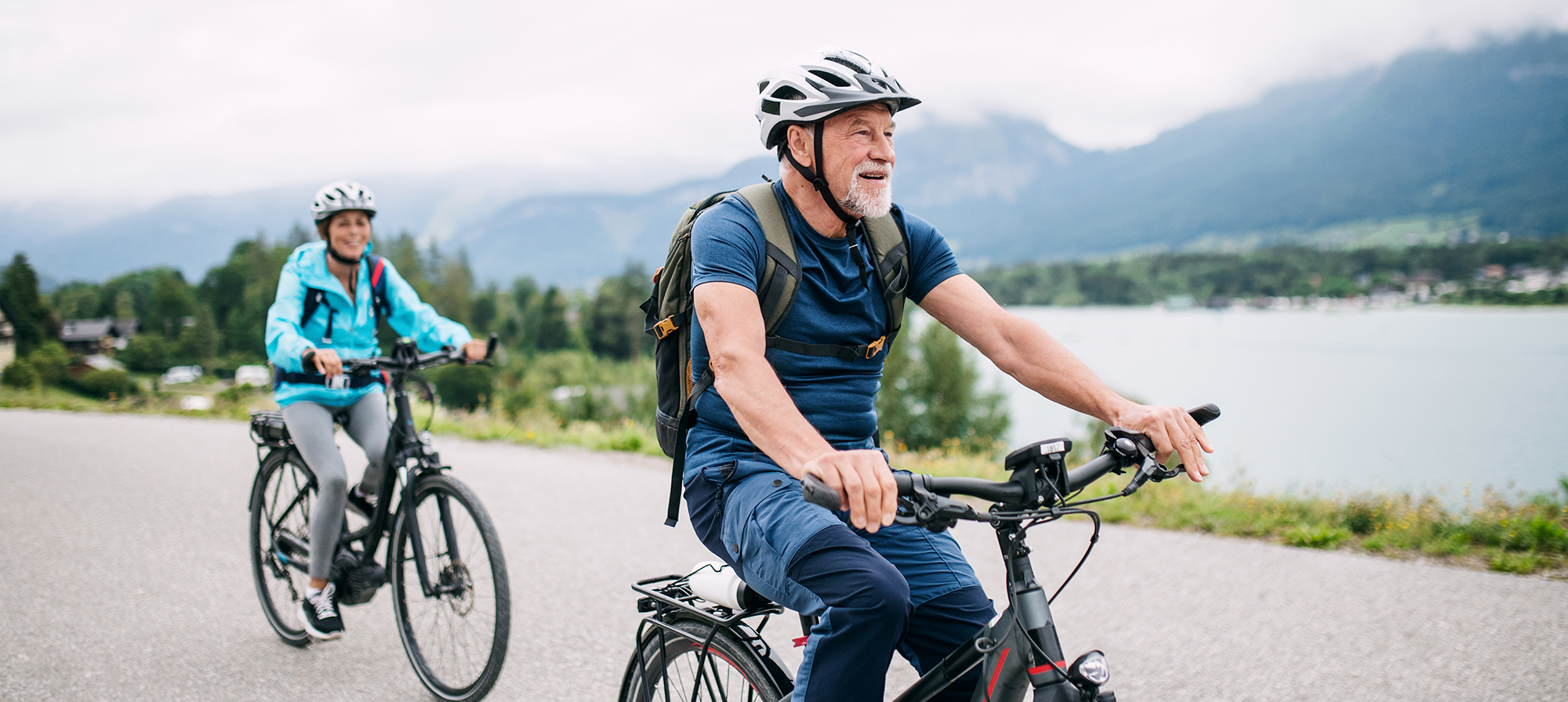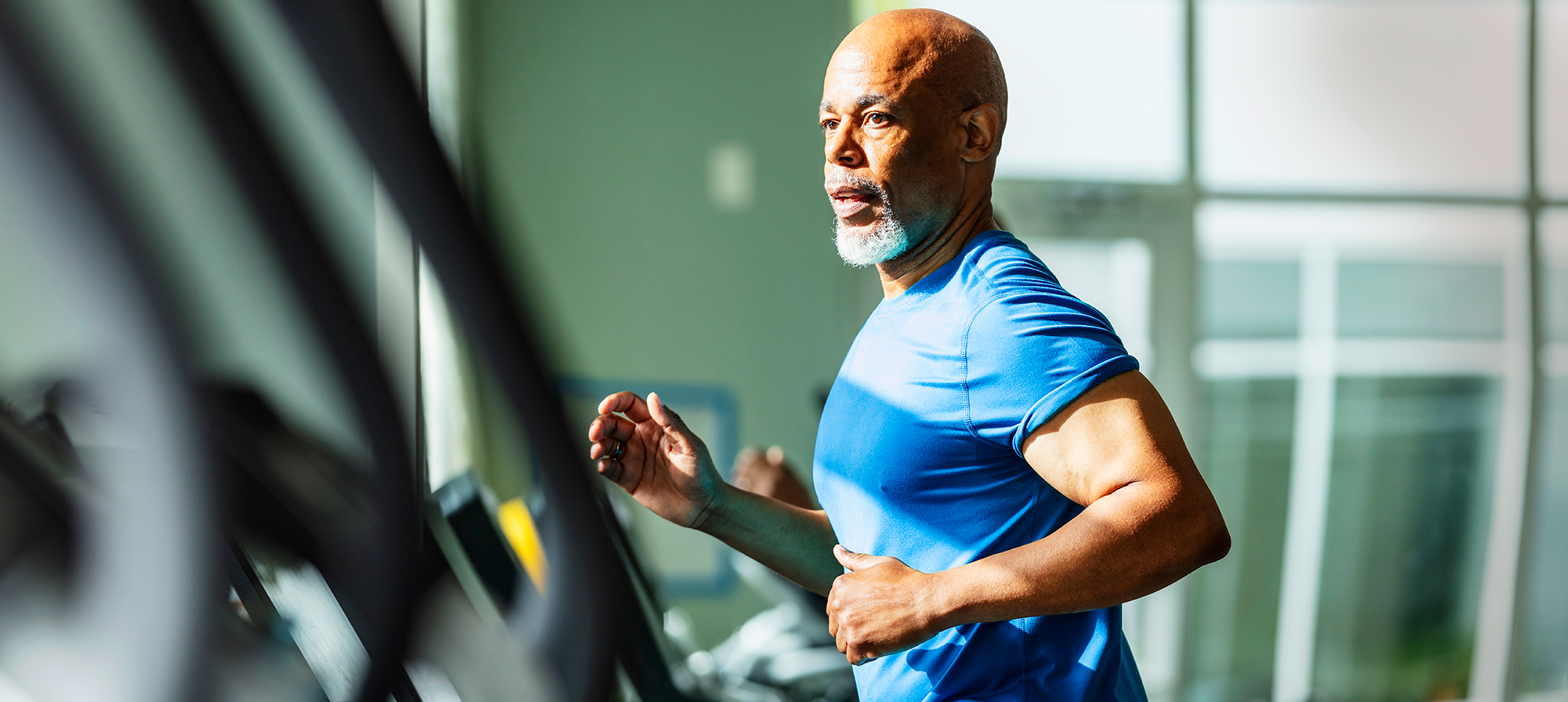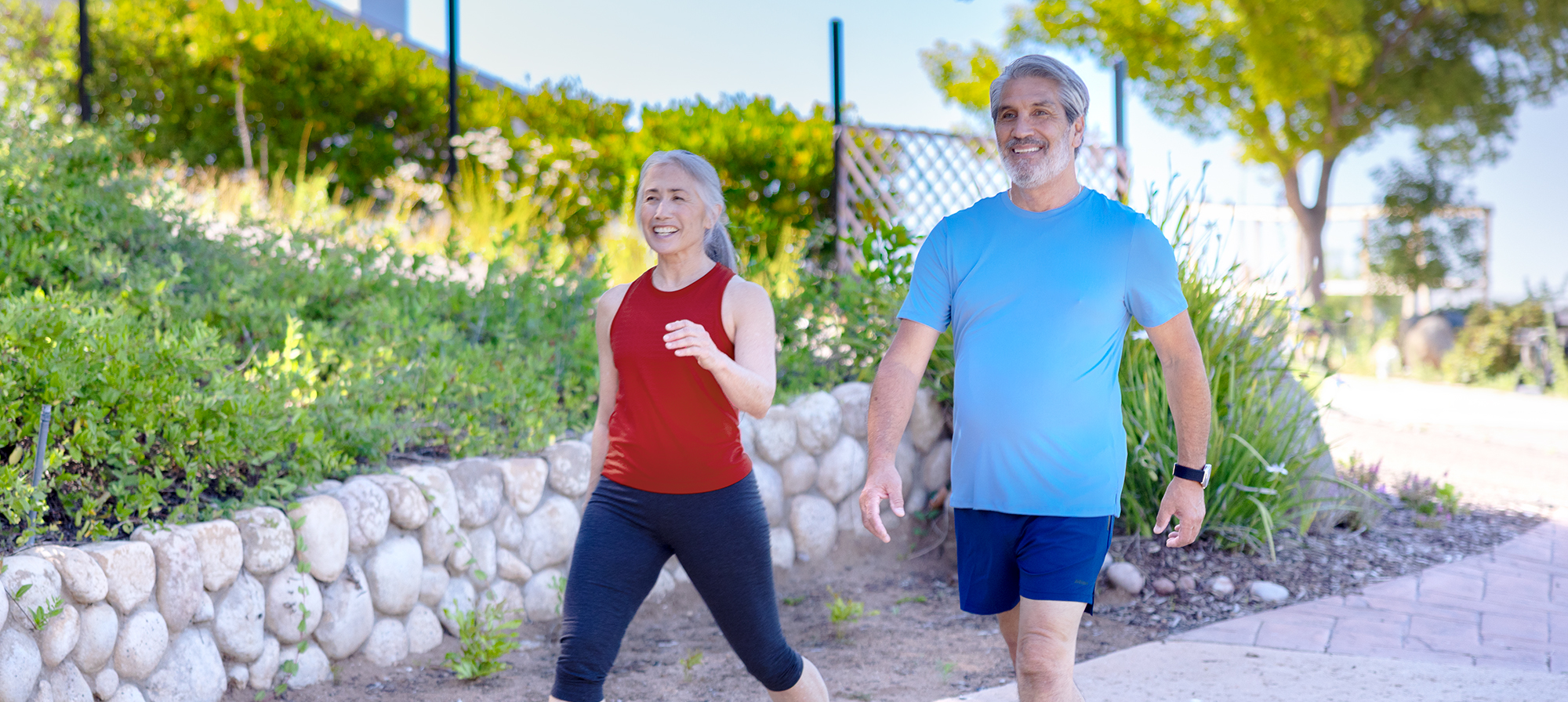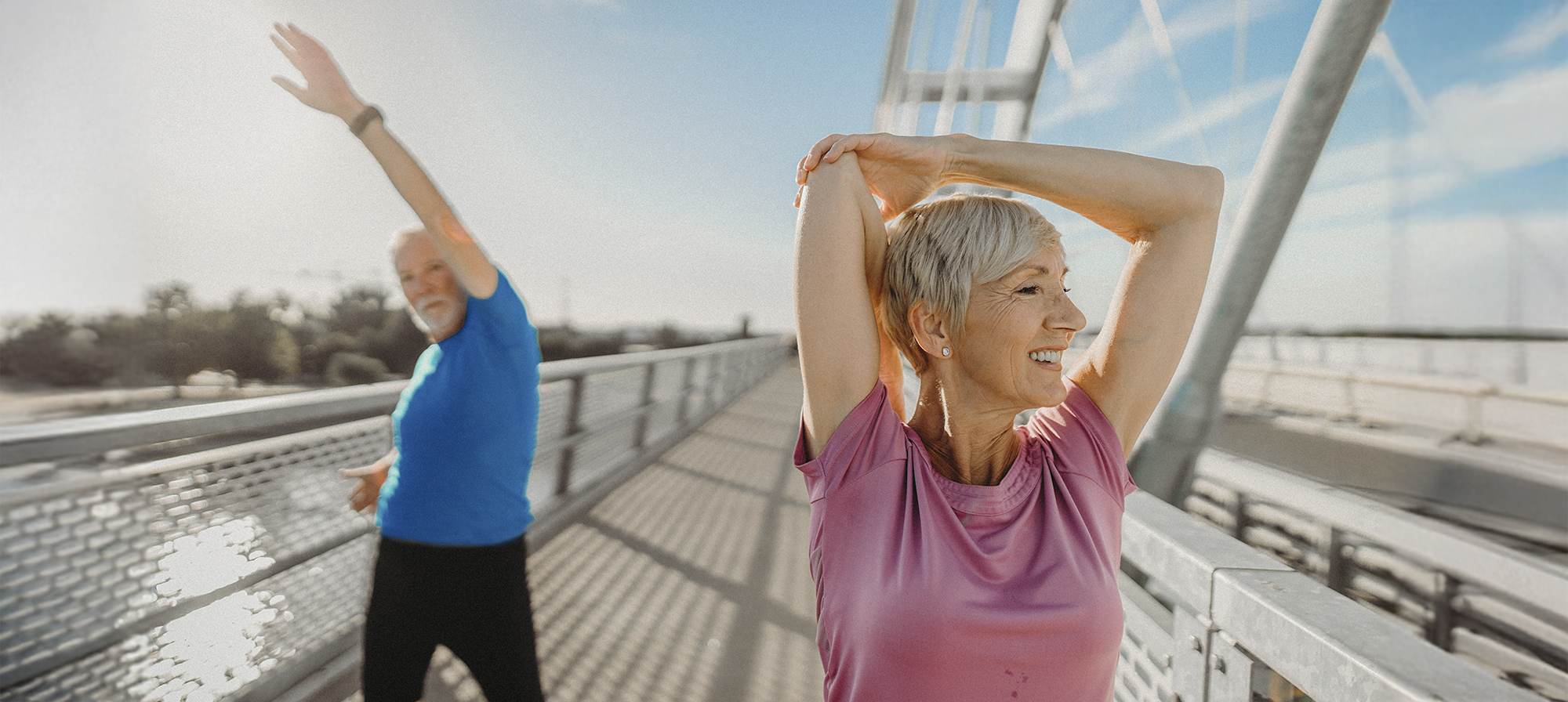If sitting on a beach is too slow for your travel tastes and the tour bus feels too impersonal, consider a bicycle tour for your next vacation.
Are you ready to hit the open road? Not by car or bus—but by bicycle? If the idea of a long-distance tour on a bicycle seems a bit daunting, take some time to consider it. Find out why traveling by bicycle is more popular than ever among people of all ages and abilities
What is bicycle touring?
For starters, don’t confuse bike touring with road races. While endurance is certainly a big part of both, in touring, speed is not the goal. There are no yellow jerseys for the fastest times. Tour de France, this is not! At its heart, bike touring is meant for pleasure and adventure. Getting in great shape along the way is just a nice side effect.
Bike tours can range from leisure day trips to extended journeys spanning multiple days, weeks, or longer. It’s a unique way to explore new places with friends and family at a pace that allows you to soak in your surroundings in ways you might not in a car, bus, or train.
It may be a slower pace, but you’ll still cover a lot of ground. And when you take in the sights on a bicycle, you’ll find you’re more immersed with the people and the culture around you.
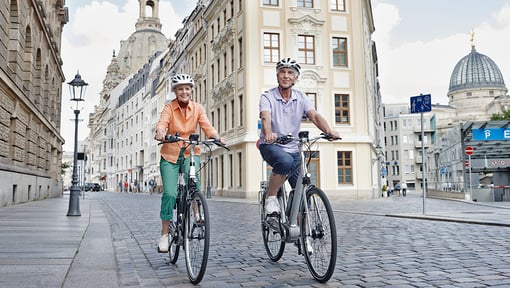
Why should you consider a bike tour?
Bike touring provides an excellent opportunity for building strength and endurance. But the benefits go way beyond building better fitness. Bike touring can also:
- Boost motivation. A bike tour makes an excellent fitness goal to work toward. Looking forward to the fun and rewarding adventure can inspire you to get fit for the event to come.
- Build social connections. The new people you meet on a bike tour can enhance social connectedness, which research suggests can help improve your mental health and well-being. Plus, the quality time spent with the group of family and/or friends you travel with can help strengthen your bonds with them. The shared experiences and memories created can be cherished forever.
- Lower the risk for certain health conditions. The fitness gains you can make from bike touring can help lower the risk for health problems such as high blood pressure, obesity, heart disease, type 2 diabetes, and more.
- Mental health and well-being. Exercising outdoors, especially in nature, and exploring new surroundings can help boost mood, energy, and well-being.
- Offer an adventure that suits everyone. You can pick and choose the tour option that’s right for you and your fitness level. You can challenge yourself with a multi-day trip or a leisurely half-day ride.
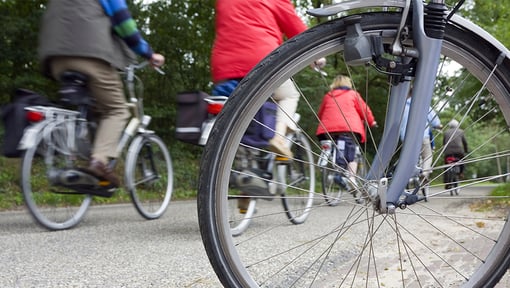
Explore the different bike touring options
If you think you’d like to try a bike tour, great! One of the first things you’ll want to do is explore the options before you create a travel plan. Get together with your travel mates and decide exactly what you want this trip to look like.
Decide as a group where you want to travel and what sort of sites you'd like to see along the way. Take this planning time to determine everyone’s cycling skills, fitness levels, and interests, as well. This way, you can be sure you’re all on the same page.
Some other questions you may want to ask each other in your group are:
- What are your current fitness and endurance levels?
- How much weekly or daily riding do you currently do now?
- Do your rides include hills or are they mostly on flat ground?
- How many miles per day can you—and do you—want to ride?
- How many total riding days would you feel comfortable taking on?
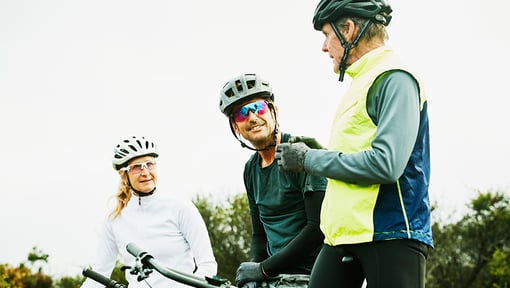
Pick the tour that’s right for you
The next step is to find a bike touring company to work with. There are tour companies all over the world. Are you thinking about a wine tour in Italy? Or perhaps something closer to home? You’ll want to do a little research to find a company that hits all the right notes for you and your group.
Of course, you don’t have to hire a tour company. If you’re up for everything that goes into planning a tour, that’s certainly an option. Just keep in mind there’s plenty of planning and logistics that go into one.
But if you decide to work with a guided tour company, they will handle all the logistics and the bulk of the planning. Many tour companies will:- Provide a private cycling guide to join your group
- Plan daily routes and pick points of interest for you to see
- Arrange meals and lodging
- Transport luggage
- Provide any bicycle maintenance
Many companies will even provide a bicycle for you if you choose.
So, if you’re looking to soak in the scenery during the day and then soak in the hot tub at night, a guided tour may be just your speed.
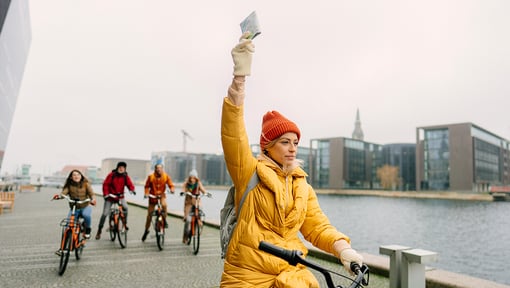
What about training?
If you have any health conditions, or if you have concerns about your balance, talk with your doctor first. Let them know about your plans and ask if it’s safe for you to take part in a bike tour.
Remember, bike tours are not races. Most people who take part in tours are in it to connect with friends and family and to create a unique and unforgettable travel experience.
However, you’ll still want to take some time before your trip to be sure you’re well prepared. You don’t need to train like an Olympic athlete, but it’s best not to go in cold without any training or conditioning at all.
If you have little to no experience riding a bicycle, a long tour may not be a good option for you. It doesn’t mean you can’t do it, but you’ll want to spend a lot more time conditioning and preparing yourself.
But if you are comfortable on a bike, find some good bike paths near you and start taking longer rides solo or with your friends a couple times a week. Keep this up until you are comfortable riding a similar daily distance as the distance on your upcoming tour. (This might be anywhere from 10 to 50 miles at a stretch.) Be sure you know how far your group will be riding each day.
This kind of training routine will help prepare your body and mind for riding longer stretches. Not only will this help keep you safe, but it will make your tour feel easier.
If you find yourself thinking a bike is only for younger people, reconsider. Cycling is a great low-impact exercise, so it may not be as hard on your joints as other types of exercise. And it’s become a popular sport for people of all ages.
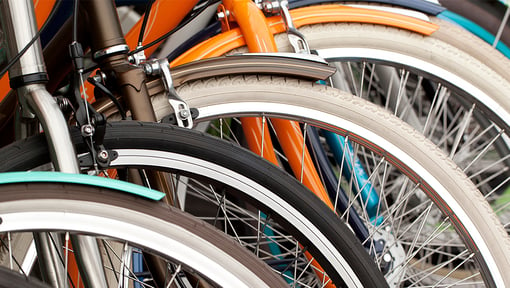
Which bicycle is best for touring?
The touring company you work with may provide a bike for you. If it’s a reputable company, they’ll be sure the bike is well-maintained and fits you well. Plus, if your tour takes place in a distant location, getting a bike from the touring company saves you the expense and hassle of shipping your bike to your destination.
If you choose to use your own bike, there are a few things to keep in mind. When riding long distances, durability and comfort are key. You don’t want a bike that breaks down often due to shoddy parts.
If you’re not sure whether your bike is suitable for a long trip, bring it to a trusted bike shop. Let them know about your travel plans. Ask if they think your bike is suitable for such a trip. If they frown on that idea, consider renting a bike, or borrowing one, if you can.
To learn more about different types of touring bikes available, read this article.
Whichever kind of bike you choose, take it for a few local rides before your trip. This will give you a chance to iron out any wrinkles and make sure everything feels alright. You don’t want to deal with faulty brakes or a loose chain in the first few miles of your long ride.
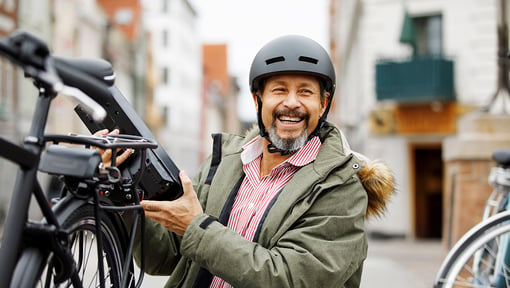
What to bring and wear on a tour
This article is not intended to be an exhaustive list of every item you’ll need to bring on a long bike tour. (Your touring company should make sure you know exactly what to bring—and what to leave at home.)
But that said, here’s an idea of what you’ll want to pack:
- Lightweight clothes. Avoid cotton. Instead, choose garments with breathable, moisture-wicking material that dries quickly.
- Padded shorts. Sitting on a bike all day, you’ll want all the padding you can get!
- Rain gear. Bring a lightweight rain jacket, rain pants, and waterproof shoe covers.
- Riding/walking shoes. You’ll be making stops during your tour, so you’ll want shoes that are as comfortable pushing pavement as they are pushing pedals.
If the bike tour you choose involves sleeping under the stars and cooking your own food on a camp stove, your packing list will be much longer than this.
But if you’re part of an organized tour group, you might not need to bring much more than a credit card and a desire to ride your bicycle.
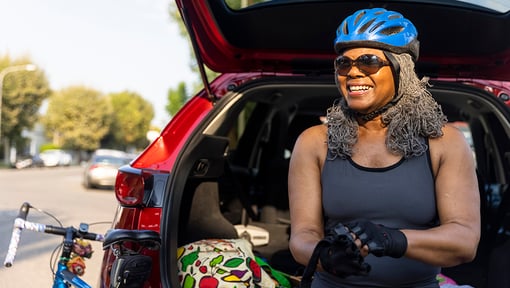
Staying safe
Bike touring is a very safe way to travel. But it’s important to take some basic precautions every time you ride.
- Stay hydrated. Be sure to drink plenty of water during your rides. If you start to feel weak or super tired at any time, pull over and take a break.
- Travel in groups. Unless you are a highly experienced rider, groups are safer.
- Wear a helmet. Even if helmets aren’t required, it’s a good habit to wear one any time you ride.
- Stay visible. You’re unlikely to do much nighttime riding, but your bike should be equipped with a headlight, taillight, and plenty of reflective tape, just in case. You may also want to wear a high-visibility vest with reflective tape.
- Be careful of traffic. Hopefully your routes will largely avoid vehicle traffic. But it’s almost certain you’ll have to navigate through some traffic now and then. Always follow the rules of the road and stay alert.
- Stay safe around dogs or other animals. Even if you’re an animal lover, carry some pepper spray in case you encounter an overly aggressive critter.
- Protect against the sun. Wear plenty of sunscreen on any exposed skin. Consider wearing lightweight long sleeves and leggings to cover your arms and legs.
Remember to be realistic about your travel goals. If this is your first-ever bicycle tour, don’t start out with a 3-month trek across Europe. Ease into it with a shorter trip. Get to know what it’s like to spend some time on your bike.
But once you’ve got the taste for it, you may quickly understand why bike touring is such a popular means of travel. The memories you make along the way with your travel mates and others will last you a lifetime. You’ll return home with a great sense of accomplishment, both physically and mentally.
Read the inspirational story of one cyclist’s 100-mile bike riding event years after recovering from brain cancer surgery.
Not a Silver&Fit® member? Learn more about everything the program has to offer, including more helpful healthy living tips like this, here on our website.
This information is not intended to take the place of regular medical care or advice. Please check with your doctor before using this information or beginning any self-care program. Images used for this article do not depict any members of the Silver&Fit Program.
References
Alff, D. (2011, December 5). The 3 main types of bicycle tours. https://bicycletouringpro.com/types-of-bicycle-tours/
American College of Sports Medicine. (2017). ACSM’s guidelines for exercise testing and prescription (10th ed.). Philadelphia: Wolters Klumer.
Arney, J. (2013, May 13). 5 ways a 5K will kick your motivation into gear. American Council on Exercise. https://www.acefitness.org/education-and-resources/lifestyle/blog/3316/5-ways-a-5k-will-kick-your-motivation-into-high-gear/
Graham, K. (2017, March 27). Get out! 5 benefits of outdoor exercise. https://www.acefitness.org/education-and-resources/lifestyle/blog/6360/get-out-5-benefits-of-outdoor-exercise
Ikpeze, T. C., Glaun, G., McCalla, D., & Elfar, J. C. (2018). Geriatric cyclists: Assessing risks, safety, and benefits. Geriatric Orthopaedic Surgery & Rehabilitation, 9, 2151458517748742. https://doi.org/10.1177/2151458517748742
Lambert, N. M., Gwinn, A. M., Baumeister, R. F., Strachman, A., Washburn, I. J., Gable, S. L., & Fincham, F. D. (2012, August 9). A boost of positive effect: The perks of sharing positive experiences. Journal of Social and Personal Relationships, (30), 1, 24-43. https://journals.sagepub.com/doi/full/10.1177/0265407512449400?rss=1
Leyland, L. A., Spencer, B., Beale, N., Jones, T., & van Reekum, C. M. (2019). The effect of cycling on cognitive function and well-being in older adults. PloS One, 14(2), e0211779. https://doi.org/10.1371/journal.pone.0211779
Markson, M. (2020, February 14). Choosing a bike for a supported cycle tour. https://tdaglobalcycling.com/2020/02/choosing-a-bike-for-a-supported-cycle-tour/
Norman, P. (2020, January 17). What is a touring bike? https://www.bikeradar.com/advice/buyers-guides/what-is-a-touring-bike/
Rook, K., & Charles, S. (2017). Close social ties and health in later life: Strengths and vulnerabilities. The American Psychologist, 72(6):567-577. doi:10.1037/amp0000104
Seppala, E. (n.d.). Connectedness and health: The science of social connection. Stanford University’s Center for Compassion and Altruism Research and Education. http://ccare.stanford.edu/uncategorized/connectedness-health-the-science-of-social-connection-infographic/
Yang, C., Boen, C., Gerken, K., Ting, L., Schorpp, K., & Harris, K. M. (2016). Social relationships and physiological determinants of longevity across the human life span. Proceedings of the National Academy of Sciences, 113(3), 578–583. doi:10.1073/pnas.1511085112
This article was written by Jason Nielsen, edited by Gail Olson, and clinically reviewed by Elizabeth Thompson, MPH, RDN.
